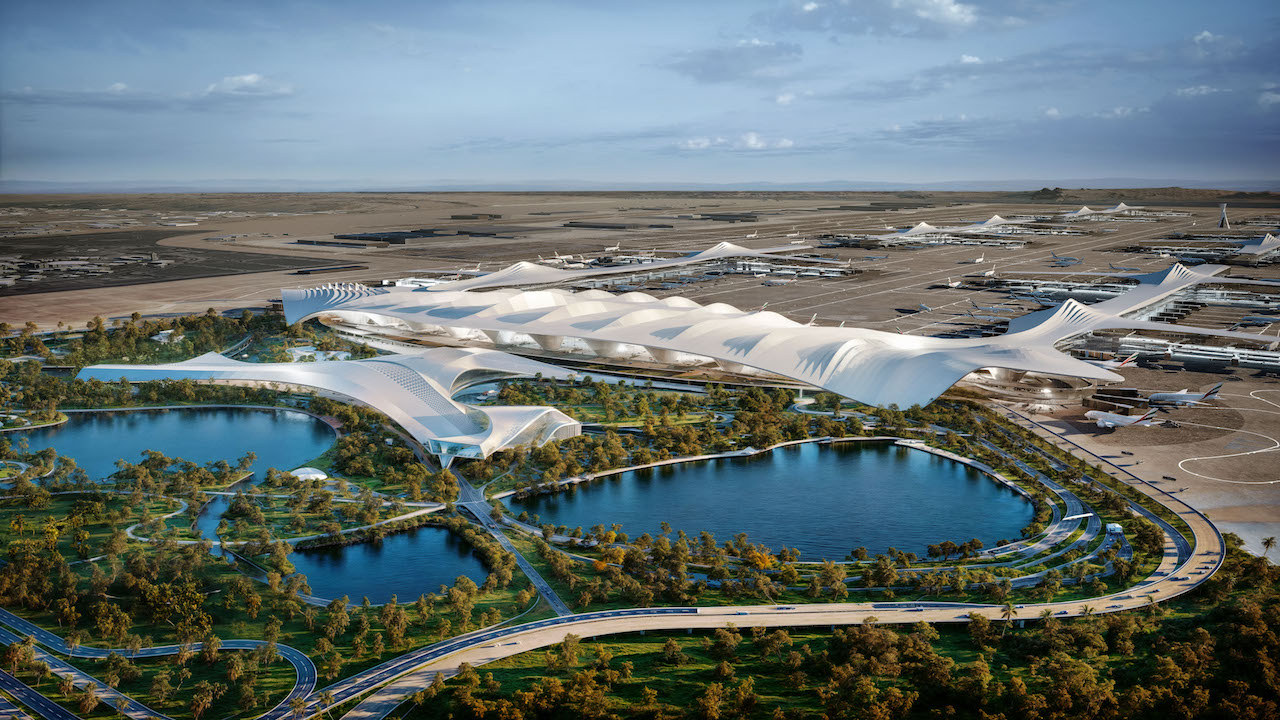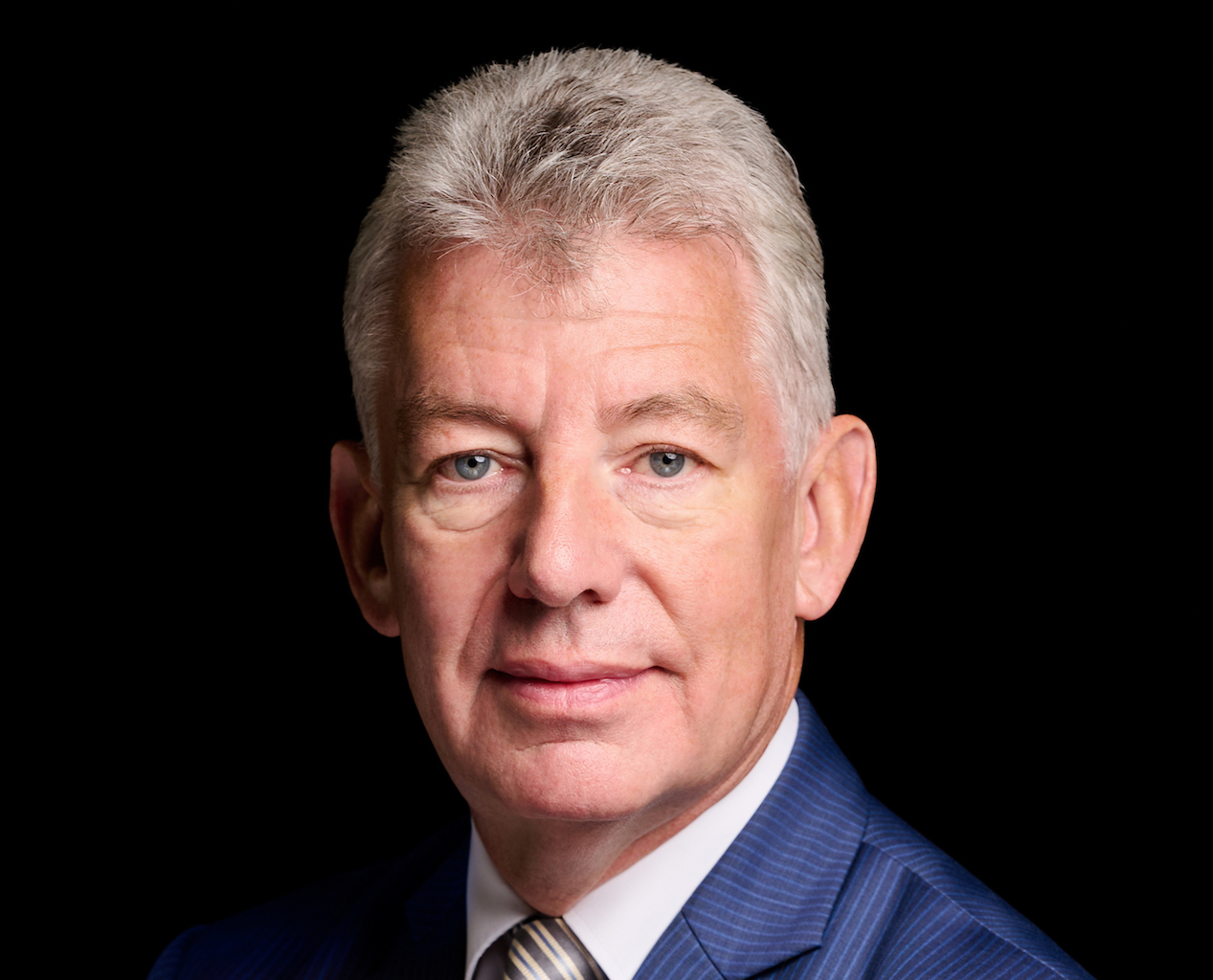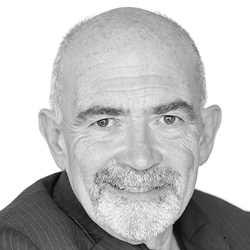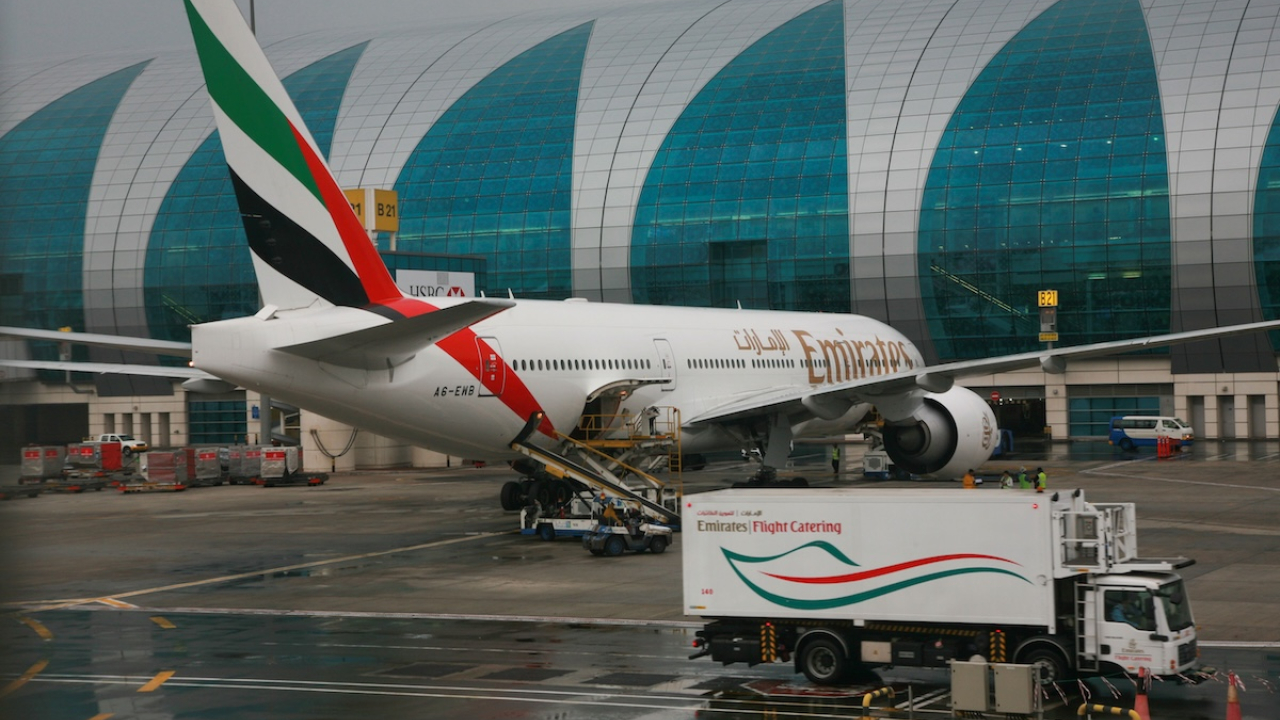The only way is up
Dubai’s ambition to remain the world’s number one international airport is backed by the emirate’s leadership and a single-minded management.

How the multi-airport DWC will look. IMAGE: Dubai Airports
Paul Griffiths, the CEO of Dubai Airports Company since 2007, was given one single KPI on his first day in the office, by his boss, chairman of the Emirates Group and Dubai Airports, and president of Dubai Civil Aviation, HH Sheikh Ahmed bin Saeed Al Maktoum: ‘Never constrain the growth of aviation in Dubai.’
For Griffiths, it was a mantra that has been at the heart of the decision making that has seen the small emirate’s airport become the busiest international airport in the world for the past decade, according to Airports Council International (ACI), and thrive through global economic downturns and disease.
Last year, the airport, DXB, set a new benchmark in global aviation, welcoming 92.3 million ‘guests’ – the highest annual traffic ever recorded in its history. This milestone surpasses the previous record of 89.1 million achieved in 2018.
The term ‘guests’ is part of the approach that Griffiths brought to the party when he came to Dubai from a stint at London Gatwick and previously leading the commercial activities of Sir Richard Branson’s Virgin Atlantic airline. Virgin was very much as “alternative” approach to the airline industry in the 1990s and it honed Griffiths approach to customer service as he switched to the airport sector.
“Fundamentally, I differ from most of my colleagues in the airport industry, because I don't think I'm an infrastructure manager,” he said.” “I don't think that airlines are the suppliers of my customers. I think we are in the hospitality business.
“We're in the business of making sure that our role as a critical part of the aviation supply chain, is made as efficient and warm and friendly as possible, so we've increased the throughput through DXB to accommodate something like 117 million, which during the course of the next few years, I think we will probably exceed.
“We think we'll get to 100 million by 2027 – probably at the latest. So definitely, the idea of not constraining the growth of aviation provides something that has caught my attention from my very first day,” he said.
Griffiths acknowledges that the whole approach by the Dubai leadership has enabled decisions to be made quickly.
Speaking at the leading aviation law company HFW’s Middle East Aviation Conference in Dubai, which had lawyers from airlines, airports and law firms as well as insurers and financial companies from around the world attending, Griffiths was asked how this differs from the UK, particularly in relation to the proposals for the third runway at Heathrow.
Reminding the delegates that in fact the first proposal for a third runway at Heathrow happened in 1946 he told how the decision to adopt the $3.7 billion development plans for DXB to expand beyond a 65 million capacity involving the construction of Concourse D, changes to the runway movement pattern and a small extension (The first all-Airbus A380 concourse) “The approval to go ahead with a range of infrastructure developments took less than 24 hours,” he said.
“I think Heathrow terminal five alone, took 10 years to plan and six years to build. And I've heard so many times in my career, ‘yes, there will be a third runway at Heathrow’, And then a panel of experts assembles all the evidence to say, ‘What a splendid idea’. Then someone comes into office and says, ‘Actually, we're not going to do that’, and then you just go round and round in a circle.”
The economic benefit of global connectivity to Dubai is well recognised. By 2030 aviation is projected to contribute $196 billion to the economy, accounting for 32 per cent of Dubai's total GDP, and additionally, the sector will support 816,000 jobs. This equates to “one in every four employees in Dubai being linked directly to the aviation industry,” Griffiths said.
With that in mind, Dubai PLC recognised that the existing DXB airport, and its city-centre location could indeed be a constraint to the growth. Dubai earmarked a vast area of the desert in Dubai South, close to Jebel Ali port – itself the 10th largest port in the world and the largest in the Middle East – and announced plans to develop a world-leading airport at what was dubbed Dubai World Central (DWC) and opened phase one of the Al Maktoum Airport to cargo in 2010 and to charter and some low-cost operations in 2013.

But last year, a $35 billion phase two expansion for DWC was announced, envisaging an airport that will eventually become the world's largest hub in terms of capacity.
It will have five runways and capacity for 150 million passengers annually within the next decade, with the capacity ultimately increasing to 260 million passengers per annum and 12 million tonnes of cargo.
Griffiths sees this as an opportunity to embrace new technology – some of which hasn’t even been thought of yet. “For far too long, we've lived with the uncomfortable legacy of very clunky systems,” Griffiths said. “We still get that issue where you have to stand in line, you have to wait for a check in agent, you have to wait while they write a novel on their computer, all those things that really shouldn't exist in the 21st century.
“And why is it that we've got discrete processes for check in for baggage? Why are we insisting on attaching a paper tag to every suitcase that goes through the baggage system? Why have suitcase manufacturers not actually pre-printed a unique barcode on every single suitcase that can be read by baggage systems very easily?” Griffiths asked
“Technology is going to converge and fundamentally change the travel experience, because we do not need separate check in, security, immigration, boarding, lounge access, baggage, handling. All of that can be converged into a single biometric signature as you walk up to the airport. If your facial recognition footprint is in the system It is recognised, then all of those things could be seen as the attacks in a single transaction.
Griffiths argues that this must fundamentally change airport design.
“It wasn't that long ago we built buildings and put systems into them, he said. “Now we're designing systems and buildings in harmony together. This is one of the big challenges for Phase Two – we've got to imagine the architecture necessary to incorporate systems that don't exist today. Anything is possible now with technology, we just got to make sure that the building reflects the process. And by that, what I mean is that we have got to stop putting the devil in the design of airports.”
Griffiths believes scale has been the enemy of passenger experience. “If you are in the lounge and you know your gate is 20 or 30 minutes away then you will get anxious,” he said.
“We have to recognise that an airport exists to provide a seamless integration between an airborne method of transport with a surface space method of transport. And recognising that as the primary focus, should not lead to design where railway stations are a bus ride away or there isn't same-level integration between public transport and the transport systems necessary to get you to your airplane.”
Griffiths believes this will be fundamental to the success of DWC – and the passenger satisfaction following the transition from DXB,
“We've got to make sure that the design of the new airport doesn't make it feel like a 216 million passenger facility, because if we get it wrong, it will be chaos,” he said.
“My job is to recognise the difference between flow and dwell, the check-in process has got to be synergised into nothing more than you see at a railway station, your biometric footprint allows you to pass through a gate, and that's the end of the entire process.
“What we're trying to do is create eight smaller, more intimate airports within that one large ecosystem, and to develop very smart airport transport systems to ensure that passenger stress to get into the gate is minimised. We need to create lounges, retail, restaurants, bars, all the facilities that you enjoy when you're dwelling in the airport, and within sight of your airplane.”
Griffiths also believes the development of new technologies in aircraft manufacturing, from composite materials and new engines will benefit the Dubai plan.
“We are witnessing an inversion of that old economy of scale,” Griffiths said. “Smaller airplanes going further are the future. There is so much latent capacity at secondary airports across the world that smaller aircraft can make these commercially viable” – and that he says is good for Dubai.
“We believe that from Dubai, instead of the 270 cities that you can fly to currently, within 10 years, that will be closer to 600 and that will create an environment where Dubai will continue to be the world's leading aviation hub.
“I think the thing is, the measure of the leadership challenge we've got, is the ability to anticipate and shape the future of what's next, even when we're not really sure what that's going to look like.”
Stay up to date
Subscribe to the free Times Aerospace newsletter and receive the latest content every week. We'll never share your email address.


